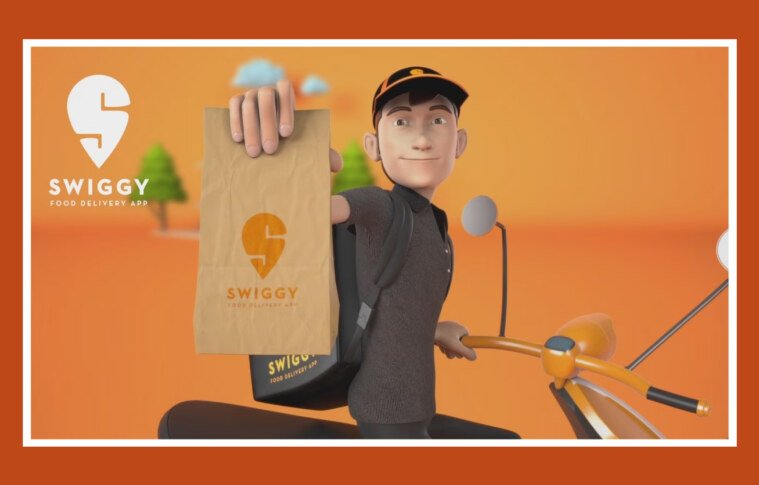Swiggy, one of India’s largest food delivery platforms, has transformed the way millions of people in the country access food. From its humble beginnings to becoming a household name in the Indian food-tech industry, Swiggy’s success story is a remarkable case of product innovation, market adaptation, and strategic growth. This case study dives into how Swiggy launched and scaled its platform and how it navigated its Initial Public Offering (IPO) to become one of the most valuable startups in India.
1. The Problem: A Fragmented Food Delivery Market in India
Before Swiggy, the Indian food delivery market was highly fragmented, with limited options for online ordering. Many people relied on traditional methods like calling restaurants directly or visiting them for takeaway. The food delivery market had its challenges, including inconsistent service quality, unreliable delivery times, and limited access to a wide range of restaurant options.
The Opportunity: Swiggy identified a significant opportunity: there was a growing demand for convenient, reliable food delivery services in India’s expanding urban centers. More people were embracing smartphones and internet access, and online ordering was becoming more popular.
2. The Founding and Early Product Development
Founders:
Swiggy was founded in 2014 by Sriharsha Majety, Nandan Reddy, and Rahul Jaimini, who were inspired by the lack of a reliable food delivery service. They wanted to build a solution that would provide both customers and restaurants with a seamless, on-demand delivery experience.
The Initial Product: Swiggy’s initial focus was on creating a user-friendly app that allowed consumers to browse a range of restaurant menus and place orders with just a few clicks. It emphasized a timely delivery system, leveraging technology and real-time tracking to provide updates to customers. The company also adopted a first-party delivery model, which meant Swiggy handled its own deliveries rather than relying on third-party logistics.
3. Key Features That Made Swiggy Stand Out
Swiggy’s success can be attributed to several key factors and innovations in its product offering:
- Reliable Delivery Network: Swiggy invested in building a robust delivery network, using technology to optimize routes and delivery times. By offering real-time tracking and consistently reliable delivery, Swiggy was able to address a major pain point for both customers and restaurants.
- Extensive Restaurant Network: Swiggy quickly onboarded thousands of restaurants, providing users with a diverse range of dining options from local eateries to upscale restaurants. The platform’s ability to offer a variety of choices made it more appealing to customers.
- User-Centric Experience: Swiggy focused heavily on its user experience. The app and website were designed to be intuitive and simple, with features like personalized recommendations, easy navigation, and multiple payment options (including cash on delivery).
- AI and Data Analytics: Swiggy leveraged machine learning and AI algorithms to enhance its logistics, predict demand, and optimize delivery times. It also used data to improve customer service, enhance personalization, and analyze user behavior to refine its offerings.
- Swiggy Pop and Swiggy Genie: Swiggy continued to innovate by launching Swiggy Pop (single-serve meals from local restaurants) and Swiggy Genie (on-demand courier services). These services expanded Swiggy’s value proposition beyond food delivery, making it a more holistic service platform.
4. Scaling and Market Expansion
From its early success in Bengaluru, Swiggy expanded rapidly to other major cities across India, including Mumbai, Delhi, Chennai, and Hyderabad. The company continually improved its logistics network, expanded its restaurant partnerships, and enhanced its app features to scale and meet growing demand.
Investment and Funding: Swiggy attracted a number of high-profile investors over the years, including Naspers, Meituan Dianping, Tencent, and Accel Partners, among others. These investments allowed Swiggy to fund its expansion, hire talent, and develop technology to further improve the platform. By 2018, Swiggy had raised more than $1 billion and was valued at over $3.3 billion.
5. The IPO Journey: Taking Swiggy Public
In 2021, Swiggy made headlines as it began preparing for its Initial Public Offering (IPO). The IPO was seen as a major milestone for the company as it sought to go public and raise capital for further expansion, innovation, and profitability.
The road to the IPO wasn’t easy. While Swiggy had grown rapidly, it had also faced several challenges, including stiff competition from Zomato (its biggest competitor), rising customer acquisition costs, and concerns over profitability. However, Swiggy’s ability to maintain a dominant position in the food delivery sector, combined with its diverse portfolio (including grocery delivery and logistics services), made it an attractive option for investors.
In 2022, Swiggy filed for its IPO, with the company raising capital to invest in product innovation, expanding its reach in smaller cities, and continuing to build out its non-food delivery services. Swiggy’s IPO was highly anticipated, as it marked a pivotal moment in India’s burgeoning tech and startup ecosystem.
6. Challenges and Strategic Moves Post-IPO
After going public, Swiggy had to navigate several challenges:
- Profitability Concerns: Like many tech startups, Swiggy faced challenges in achieving profitability while trying to scale. The company continued to focus on its high-margin businesses, such as Swiggy Instamart (grocery delivery), to reduce dependency on food delivery revenues.
- Competition: The competition from Zomato and newer entrants like Amazon Food remained fierce. Swiggy responded with strategic investments in technology and customer experience to stay ahead.
Swiggy also continued to invest in artificial intelligence to optimize deliveries and in supply chain innovation to reduce operational costs. As of late 2023, Swiggy had become profitable and continued its rapid expansion into new markets, all while improving customer loyalty through features like Swiggy Super (a subscription service for free deliveries).
7. The Outcome: A Leader in the Food-Tech Space
Swiggy’s success can be attributed to its strong product-market fit, relentless focus on customer experience, and continuous innovation in the food delivery and logistics space. Its IPO marked the company’s maturity as a business, providing the necessary capital to fuel its future growth while continuing to disrupt the Indian food and logistics markets.
As of 2024, Swiggy remains one of India’s most valuable startups, with a growing portfolio of services that extends beyond food delivery. The company has cemented its place as a pioneer in India’s food-tech sector, making it one of the most successful tech-driven businesses in the country.
Conclusion: Swiggy’s journey from an idea to a disruptive product that transformed the food delivery landscape in India serves as a powerful example of how product innovation, market adaptation, and strategic vision can lead to success. The company’s ability to scale rapidly, leverage technology for operational efficiency, and diversify its offerings allowed it to become a major player in the food-tech industry — and its IPO is just the next step in its ongoing journey of growth and disruption.
Disclaimer
Posts in the Notebook are written by individual members and reflect personal insights or opinions. Please verify any information independently. If you have any concerns, notify the admin immediately so we can take action before any legal steps are taken.





